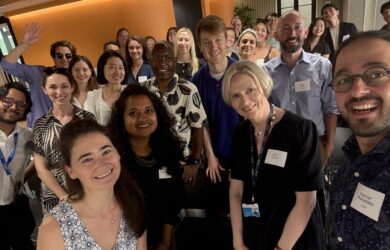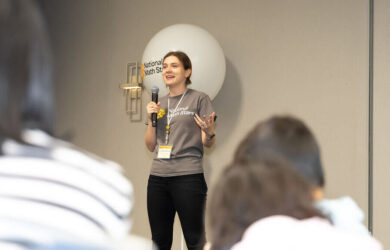Josh Cohen's research on a new method of mapping transcription factor binding sites could help scientists understand the fundamental mechanisms by which someone contracts breast cancer.
A new method of mapping transcription factor binding sites could help scientists understand the fundamental mechanisms by which someone contracts breast cancer.
The research, conducted by Gates Cambridge Scholar Josh Cohen as part of a team of researchers at the Cancer Research UK Cambridge Institute, has just been published in the journal Genome Biology.
It provides a new way of mapping the locations of the transcription factors which switch certain genes on or off along a cell’s DNA. The spacing of these factors dictates how cells are regulated and is one of the main keys to understanding how breast cancer occurs.
The researchers’ method is called ChIP-exonuclease (ChIP-exo). It was developed initially by another laboratory for mapping transcription factor binding sites in yeast, but the researchers applied it to mammalian cells for the first time with a focus on breast cancer. They also adapted it to the Illumina platform, which has the advantage of being the current predominant genome sequencing technology. “That means our method is more widely accessible to other laboratories and can be better applied towards understanding other human diseases in addition to breast cancer,” says Cohen.
Cohen [2012] chose to come to Cambridge after doing his undergraduate degree in Chemical and Biological Engineering at MIT. He wanted to gain experience in Computational Biology and use it to answer questions about cancer. “Cambridge was a transition phase for me in my quest to use engineering tools to study cancer and my first experience of working in a cancer centre,” he says.
He worked at the Nuclear Receptor Transcription Laboratory Cancer Research UK under Dr Jason Carroll whose focus is understanding the genetic basis of breast cancer. Josh’s computational work involved using data from the new ChIP-exo method to demonstrate its advantages over existing methods for mapping transcription factors involved in breast cancer.
He moved from Cambridge to the Johns Hopkins University School of Medicine in August where he is doing a combined MD and PhD. He is currently in the first year of medical school and will begin his PhD in two years. He hopes to continue working on cancer biology.
Full details of the research can be found here.












